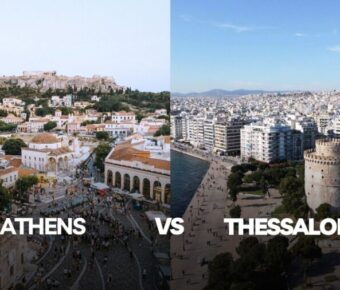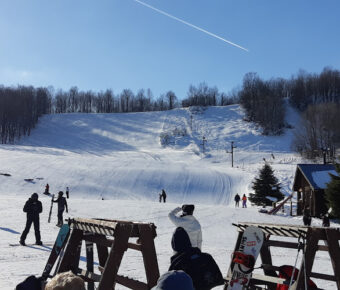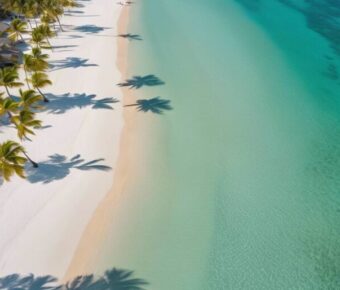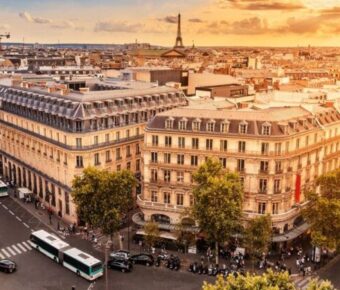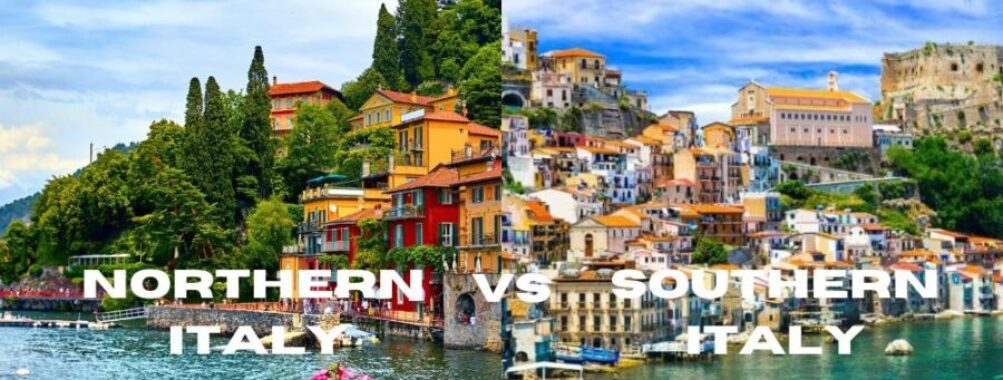
Northern Italy vs Southern Italy: 7 Key Cultural and Lifestyle Differences You Need to Know Before Visiting
Italy’s north and south feel like two different countries with unique charms, flavors, and lifestyles. The ancient Romans brought these regions together, but today they maintain distinct personalities shaped by centuries of different rulers and traditions.
Northern Italy shines with its snow-capped Alps, fashion-forward cities like Milan, and prosperous industries, while Southern Italy captivates visitors with sun-soaked beaches, rustic villages, and slower-paced way of life. Many travelers struggle to choose between visiting the north or south, not realizing that each region offers totally different experiences.
Rome sits right between these two worlds, marking the divide between north and south. This split creates an amazing chance for travelers to experience two unique versions of Italian culture in one country. The contrasts between these regions make Italy an extra special place to explore.
Table of Contents
- Historical Context and Cultural Significance
- Renaissance and the Arts
- Ancient Roots and Greek Influence
- Northern Italy’s Rich History
- Southern Italy’s Diverse Heritage
- Geography and Climate
- Northern Italy’s Diverse Landscapes
- Mediterranean Coastline of Southern Italy
- Economic Disparities
- North Italy’s Industrial Powerhouse
- Agriculture and Tourism in South Italy
- Cuisine and Gastronomy
- Northern Italian Cuisine
- Southern Italian Gastronomy
- Travel and Accommodation
- Exploring Cities and Towns
- Unique Stays and Experiences
- Social and Linguistic Variations
- Dialects and Languages
- Social Norms and Customs
- How do the cuisines of Northern Italy differ from those in the South?
- In terms of economy, what distinguishes Northern Italy from its Southern counterpart?
- Is there a historical context behind the economic disparities between Northern and Southern Italy?
- What are some common stereotypes associated with Northern and Southern Italians?
- How does tourism compare between the Northern and Southern regions of Italy?
- Book Your Dream Experience
- More Travel Guides
Historical Context and Cultural Significance
Italy’s rich cultural tapestry reflects centuries of diverse influences, artistic achievements, and regional development that shaped both the north and south into distinct yet connected regions. The differences between these areas trace back to ancient civilizations and continue to influence modern Italian life.
Renaissance and the Arts

Florence and Venice led the Renaissance movement, making Northern Italy the birthplace of this cultural revolution. Artists like Leonardo da Vinci and Michelangelo created masterpieces in northern cities that drew scholars and creators from across Europe.
The north’s wealth from trade helped build grand palaces and fund artistic works. Milan’s Duomo and Florence’s Uffizi Gallery stand as testaments to this golden age of creativity.
Many northern Italian cities became centers of learning, with universities that trained Europe’s brightest minds. These schools helped spread Renaissance ideas throughout the continent.
Ancient Roots and Greek Influence

Southern Italy’s Greek heritage dates back to the 8th century BCE. Cities like Syracuse in Sicily were among the most powerful Greek colonies outside of Greece itself.
Ancient Greek temples still dot the southern landscape. The Valley of Temples in Agrigento shows off some of the best-preserved Greek ruins anywhere in the world.
Greek influence lives on in southern dialects, customs, and festivals. Many southern Italian towns still celebrate traditions with clear links to ancient Greek practices.
Northern Italy’s Rich History
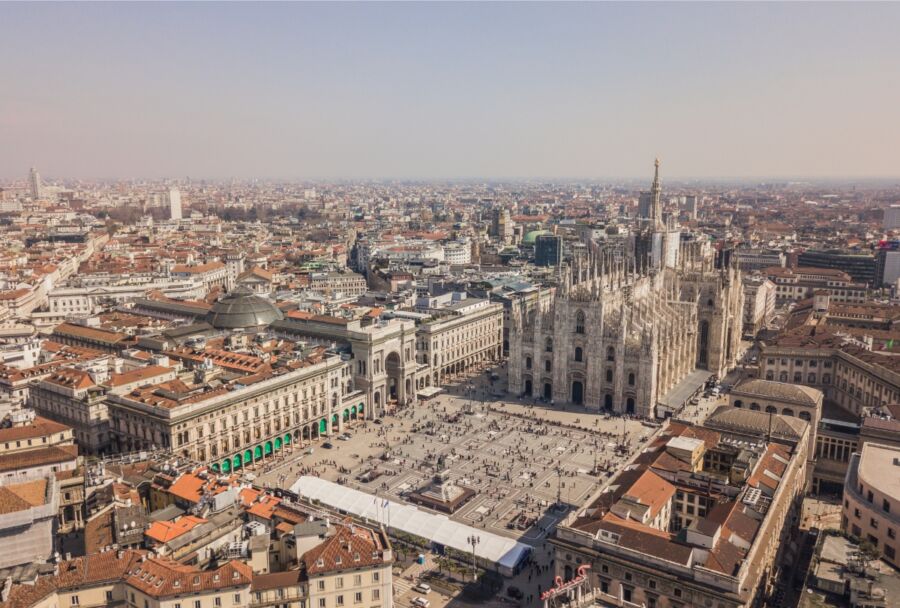
The north’s location at the crossroads of Europe shaped its development. Trade routes through the Alps brought wealth and new ideas to cities like Venice and Milan.
Northern Italy’s powerful city-states competed for dominance during medieval times. This competition sparked innovations in banking, art, and architecture.
The region’s proximity to central Europe influenced its culture through centuries of trade and cultural exchange with French, German, and Austrian neighbors.
Southern Italy’s Diverse Heritage
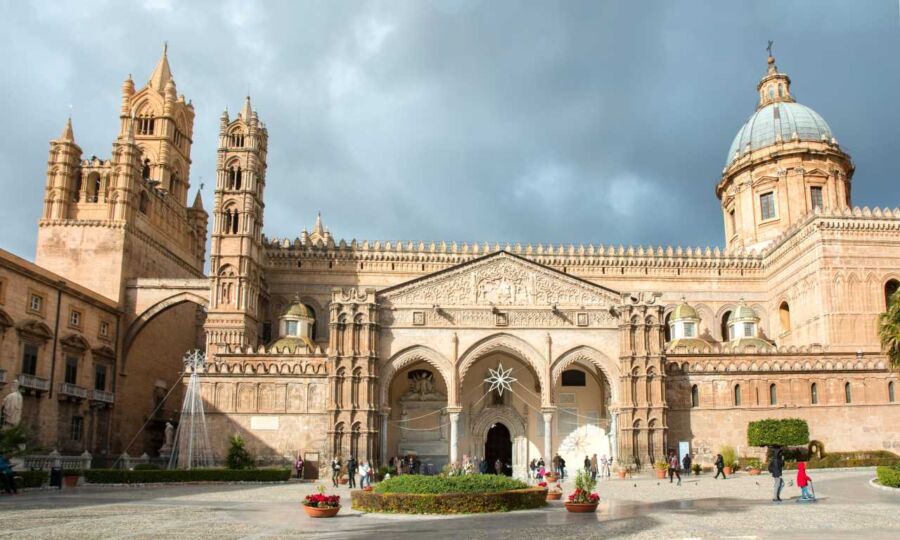
Arabs, Normans, Spanish, and Greeks all left their mark on southern culture. This mix created unique architectural styles, like Arab-Norman buildings in Sicily.
The south’s farming traditions reflect its warm climate and fertile volcanic soil. Many southern Italian foods and cooking methods come from ancient Greek and Arab influences.
Coastal cities in the south developed distinct maritime cultures. Naples, Palermo, and Bari became important ports that connected Italy to distant lands across the Mediterranean.
Geography and Climate
Italy’s diverse landscape creates distinct geographical regions with vastly different climates between north and south. The terrain ranges from snow-capped mountains in the north to sun-drenched Mediterranean coastlines in the south.
Northern Italy’s Diverse Landscapes

The Italian Alps and Dolomites dominate Northern Italy’s skyline, with peaks reaching above 4,000 meters. These mountains create a natural barrier that blocks cold winds from central Europe.
The Po Valley stretches across the north, creating a fertile plain perfect for agriculture and urban development. This area experiences hot summers and cold winters with frequent fog.
Several stunning lakes dot the northern landscape, including Lake Como and Lake Garda. These bodies of water help moderate the local climate.
Mediterranean Coastline of Southern Italy
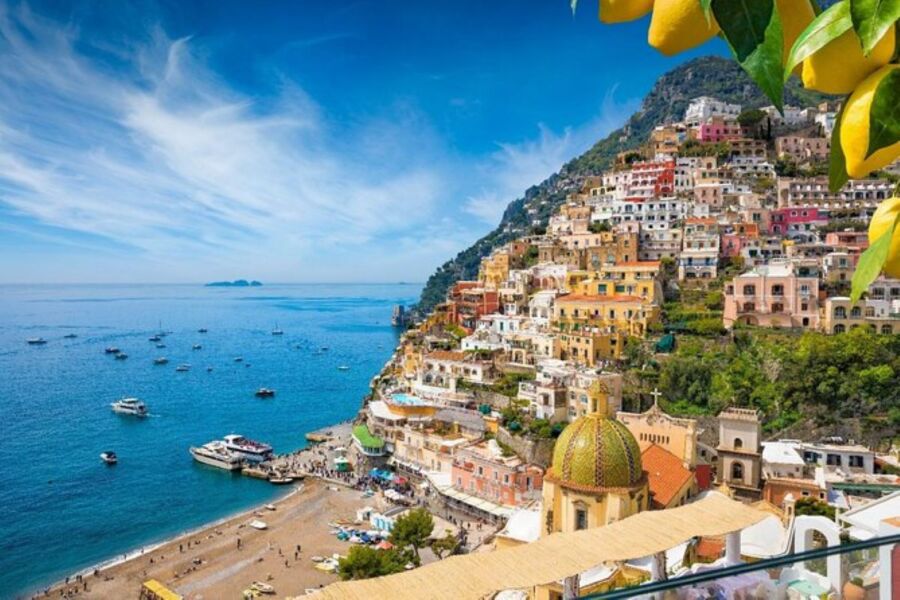
The Amalfi Coast showcases dramatic cliffs that plunge into the crystal-clear waters of the Tyrrhenian Sea. Small beaches nestle between rocky outcrops, creating picture-perfect swimming spots.
Southern Italy enjoys a classic Mediterranean climate with mild winters and hot, dry summers. Coastal areas benefit from cooling sea breezes.
The Adriatic Sea borders the east coast, offering gentler beaches and calmer waters than the western shore. Olive groves and citrus orchards thrive in this warm climate.
Fun fact: The temperature difference between Milan and Palermo can be up to 15°C (59°F) on the same winter day.
Economic Disparities
Italy faces one of Europe’s most striking economic divides, with stark differences in jobs, industries, and living standards between its northern and southern regions. The gap creates two different economic realities within one country.
North Italy’s Industrial Powerhouse
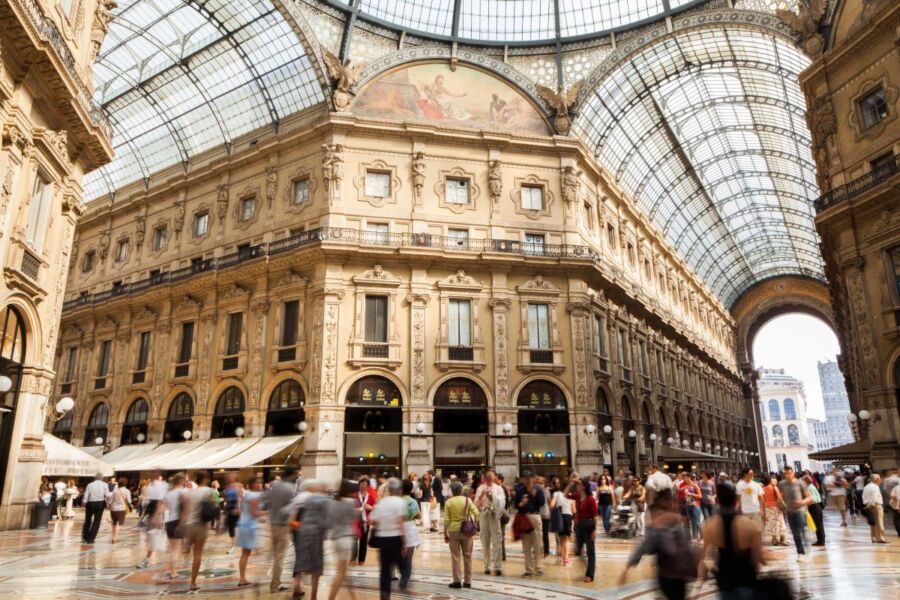
Northern Italy stands as a manufacturing and industrial hub, with cities like Milan and Turin leading the charge. The region hosts major automotive companies, fashion houses, and technology firms that drive economic growth. Employment rates reach 70% in working-age adults, showing the strength of the job market.
Manufacturing clusters create a ripple effect, supporting smaller businesses and boosting local economies. Modern factories and research centers attract skilled workers and international investment. The north’s strategic location near central Europe helps businesses connect with major markets.
Agriculture and Tourism in South Italy

Southern Italy relies more heavily on traditional economic sectors. Small farms produce olive oil, wine, and citrus fruits that are famous worldwide. The tourism industry brings visitors to coastal areas and historic sites, though many jobs are seasonal.
The region struggles with higher unemployment – only about 50% of working-age people have jobs. Many young workers move north or abroad to find better opportunities. Small businesses face challenges getting loans and investing in new technology.
Tourist areas see busy summer seasons but quieter winters. While agriculture remains important, many farms use older methods and struggle to compete with larger operations.
Cuisine and Gastronomy
Italian cuisine varies dramatically between the northern and southern regions, shaped by local ingredients, climate, and cultural influences. The north embraces rich, creamy dishes while the south celebrates fresh Mediterranean flavors.
Northern Italian Cuisine
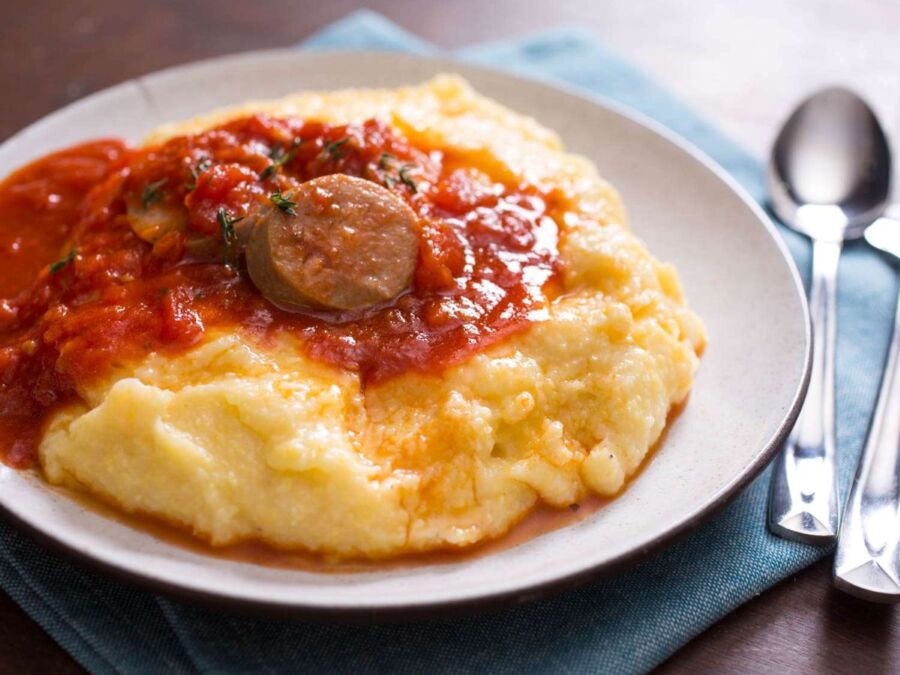
Northern Italian food draws influence from neighboring Alpine countries. Butter and cream form the base of many dishes, replacing the olive oil common in other regions. Rice paddies in the Po Valley make risotto a staple dish.
Polenta, made from cornmeal, appears frequently on northern tables. It’s often served with rich meat stews and game. Fresh pasta here tends to be egg-based, like tagliatelle and tortellini.
The region’s signature dishes include cotoletta alla milanese – a breaded veal cutlet, and risotto alla milanese flavored with saffron. Parmigiano-Reggiano cheese and prosciutto di Parma come from this area.
Southern Italian Gastronomy
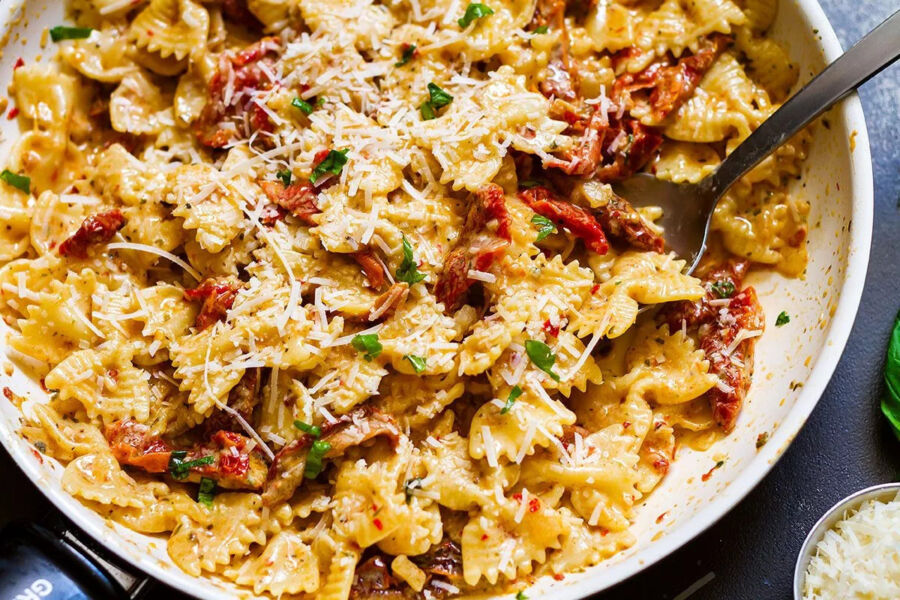
Sun-ripened tomatoes and olive oil define southern Italian cooking. The warm Mediterranean climate provides an abundance of fresh vegetables and citrus fruits. Pasta is typically made without eggs, using just water and durum wheat.
Seafood plays a starring role in southern dishes. You’ll find lots of swordfish, sardines, and anchovies. The fertile volcanic soil around Mount Vesuvius produces sweet San Marzano tomatoes used in pizza and pasta sauces.
Famous southern specialties include Neapolitan pizza, pasta alla norma with eggplant, and fresh mozzarella di bufala. Desserts feature local ingredients like pistachios, almonds, and citrus – think cannoli and limoncello.
Travel and Accommodation
Getting around Italy and finding great places to stay differs quite a bit between the northern and southern regions. Transportation options and accommodation styles vary in cost, style, and accessibility.
Exploring Cities and Towns
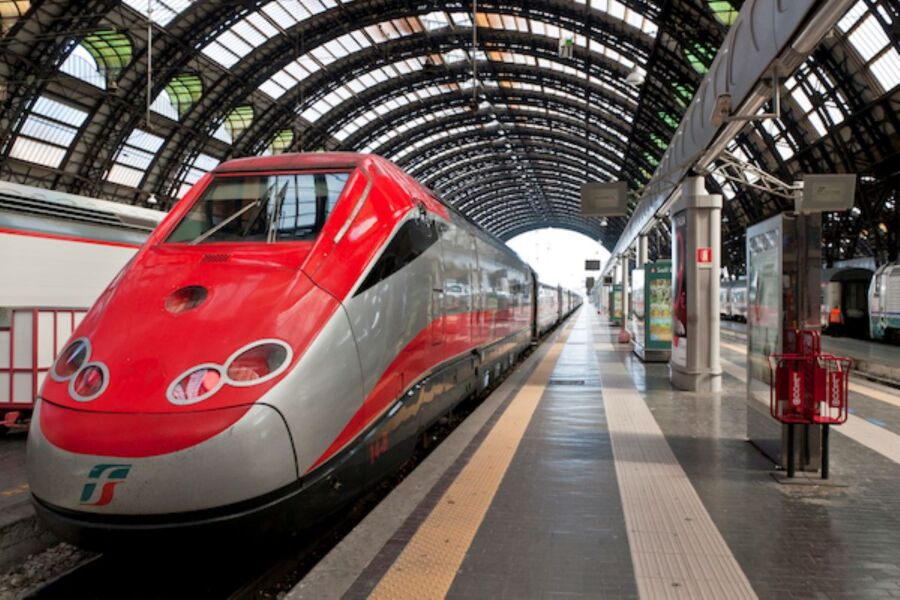
High-speed trains connect major northern cities like Venice, Florence, and Milan, making travel quick and convenient. The modern rail network lets travelers zip between destinations in just a few hours. Book things to do and attractions in each stop along the way.
Southern Italy requires more planning to get around. Trains run less frequently and take longer. Many charming towns like Matera and Alberobello need a rental car or organized tour to visit properly.
The narrow streets of Lake Como’s villages invite casual strolling, while Venice’s water taxis offer a unique way to explore. Small group tours work well for seeing multiple southern towns in one trip.
Unique Stays and Experiences

Northern Italy features luxury hotels and upscale resorts, especially around Lake Como and major cities. Find great accommodation deals across all price ranges. Historic palazzos turned boutique hotels give visitors a taste of old-world glamour.
The south shines with authentic experiences like staying in Matera’s cave hotels or Alberobello’s trulli houses. Family-run B&Bs and agriturismos (farm stays) let visitors connect with local culture.
Coastal towns in both regions offer seaside stays. Northern beach resorts tend toward modern amenities, while southern beaches keep things simple and laid-back.
Book guided experiences to make the most of each region’s unique accommodation options.
Social and Linguistic Variations
Italy shows distinct social patterns and language differences between its northern and southern regions, creating unique cultural identities that shape daily life and communication styles.
Dialects and Languages
Northern Italian regions like Lombardy and Veneto use unique dialects influenced by French and German. People in Milan speak Milanese, while Venice natives use Venetian – both quite different from standard Italian.
Northern Italians often add articles before first names in casual speech. They might say “la Maria” instead of just “Maria” – a habit rarely seen in the south.
The southern dialects carry strong Greek and Arabic influences. Sicilian and Neapolitan dialects have their own vocabulary and pronunciation rules that can make them hard for other Italians to understand.
Social Norms and Customs
Northern Italians tend to be more reserved in social situations. They value punctuality and formal business etiquette. Personal space is important, and greetings are often quick and professional.
Southern Italian culture emphasizes close family bonds and community ties. Multi-generational families often live together or very close by. Meals are long, social events that bring everyone together.
The south maintains stronger traditional gender roles. Women play central roles in family life and local traditions. Many southern towns still practice age-old festivals and ceremonies.
Street life is livelier in southern cities. People spend more time outdoors, chatting with neighbors and enjoying evening walks called passeggiata.
How do the cuisines of Northern Italy differ from those in the South?
Northern Italian cooking uses more butter, cream, and rice. Popular dishes include risotto, polenta, and meat-based meals.
Southern Italian food features olive oil, tomatoes, and pasta. Fresh seafood plays a big role in coastal areas.
The climate shapes these differences. The cooler north supports dairy farming, while the warm south grows amazing fruits and vegetables.
In terms of economy, what distinguishes Northern Italy from its Southern counterpart?
Northern Italy hosts major industrial centers like Milan and Turin, where many international companies maintain offices.
The south relies more on agriculture, tourism, and small family businesses. Unemployment rates run higher than in the north.
Manufacturing and fashion industries power the northern economy. Turin’s auto industry and Milan’s fashion houses bring significant wealth to the region.
Is there a historical context behind the economic disparities between Northern and Southern Italy?
The north benefited from early industrialization in the 1800s. Its location near central Europe created strong trade connections.
The south stayed mostly agricultural after Italian unification. Many southern workers moved north between 1955 and 1970 seeking factory jobs.
Trade routes and foreign influences shaped development patterns. Northern ports connected easily to European markets.
What are some common stereotypes associated with Northern and Southern Italians?
Northerners get labeled as workaholics focused on efficiency and punctuality. People often view them as more reserved and formal.
Southern stereotypes include being laid-back, family-oriented, and expressive. Some see them as less organized but more welcoming.
How does tourism compare between the Northern and Southern regions of Italy?
The north attracts visitors with its Alps, fashion centers, and Lake Como. Winter sports bring many tourists to mountain resorts.
Southern Italy offers ancient ruins, coastal villages, and beautiful beaches. Places like Sicily and the Amalfi Coast draw summer crowds.
Each region provides unique experiences. The north features luxury shopping and skiing, while the south excels in beach holidays and historic sites.
